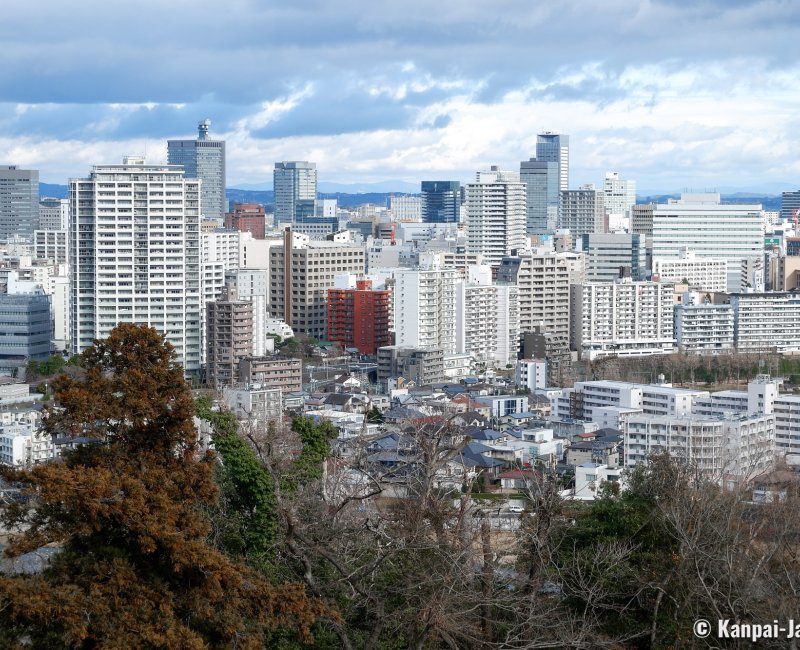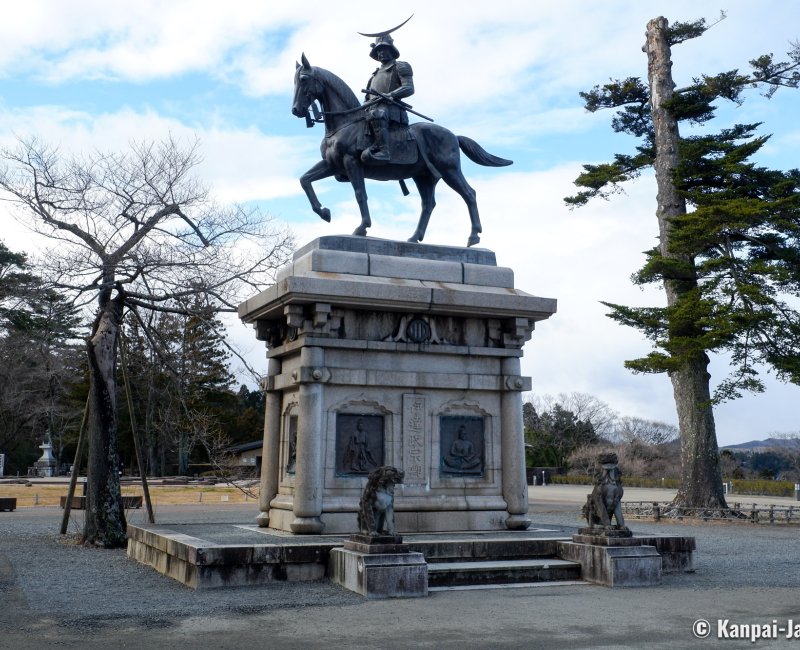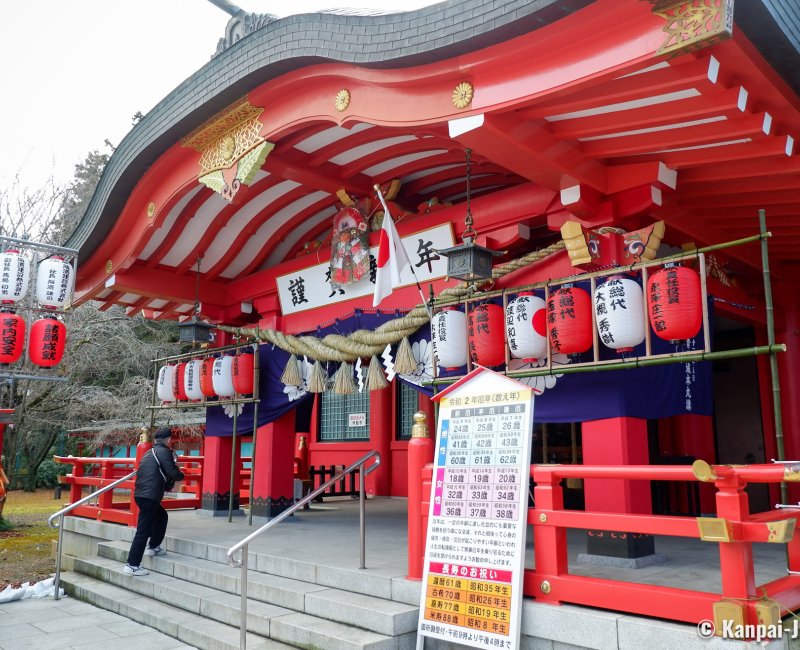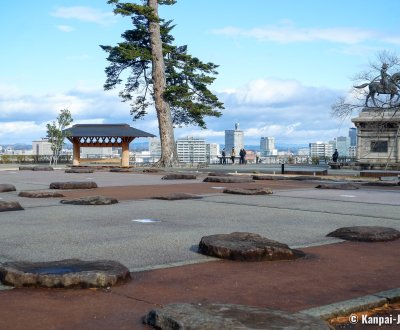Sendai Castle
Ruins of the Date Clan on Mount Aoba
Sendai Castle is an old fortified monument now in ruins, located in the eponymous city, capital of Miyagi prefecture in the north of Japan. Built by warlord Date Masamune, the first daimyo to reign over the Sendai domain, the feudal enclosure is sitting at the top of Mount Aoba and is still overlooking the modern city.
Sendai earned its status as Tohoku’s large regional city thanks to its first ruler, daimyo lord Date Masamune (1567 – 1636), who, in the early Edo Period, developed trading and construction of remarkable monuments. In the heart of the city, called "Iwatezawa" at the times, he began in 1601 with the construction of his residence and headquarters of feudal power first called "Aoba Castle 🏯," renamed later into "Sendai Castle."

The modern city overlooked by Aoba Castle
Perched at 115 meters of altitude at the top of Mount Aoba and on the bank of the Hirose River, Sendai Castle benefits from a commanding location that makes it difficult to attack. Ruled by the Date Clan throughout the Edo period, the feudal domain lost most of its influence and power during the Meiji Restoration in 1868.
In addition to its dismantling ordered by the emperor at the end of the 19th century, the castle was also impacted by disasters, such as several devastating earthquakes, a great fire 🔥 in 1882 and the air raids of July 1945 that left it in ruins.
Nowadays, no original building remains, except for the fortification walls enclosing the main esplanade. A few minutes’ walk down in the historical park, the Otemon Waki-yagura (大手門脇櫓) tower was rebuilt in 1967.
Devoid of any vertical construction, the horizontal esplanade is spreading on a height and overlooks the modern city. Consequently, the ruins of Aoba Castle have become a place renowned for their unobstructed panoramas on Sendai and the surrounding mountains, day and night.
One can especially see:
- In the distance the great and immaculate white statue of Sendai Daikannon;
- The vicinity of the JR station, where stand most of the city’s skyscrapers, and,
- Toward west, part of the long Ōu mountain range (Ou-sanmyaku) that spreads over 500 kilometers in the Tohoku.

Ohiroma, the remains of the main building
The remains of the main building, called Ohiroma and dating to 1610, are the best staged for visitors. They can admire the foundation and landscaping that have been reconstituted on the ground. Very large, the Ohiroma Pavilion spread on an 881 m² surface with a total of 14 rooms, whose most important where:
- Jodan-no-ma, Masamune’s room, also used for important ceremonies and political meetings; and,
- Jojodan-no-ma, a private room only used to receive the shoguns of the Tokugawa dynasty and members of the imperial family.
A small adjoining museum, whose access is free, displays a 1/50 scale model of the Ohiroma as well as beautiful authentic paintings and other period items.
Opposite the museum, Date Masamune’s equestrian statue was erected at the very place where Sendai’s keep used to stand. Masamune is wearing his characteristic helmet decorated with a half-moon asymmetric crescent and seems to be eternally watching over his beloved city.

Gokoku-jinja war shrine
Founded in 1904 on Sendai Castle’s grounds, the bright vermilion Gokoku-jinja shrine is affiliated to the Yasukuni Shrine in Tokyo. It is intended as a tribute to the area’s warriors who died in battle to protect the Japanese people.
It layout is of a classical Shinto shrine, and it is attended more for worshiping than for the remarkable beauty of its pavilions. Worshipers come to pray and get omamori protection amulets or ema votive plates for happiness.
Additionally, a museum dedicated to war, covering the Boshin war (1868 – 1869) to WWII, displays seasonal exhibitions.
Back at the foot of Mount Aoba, it is possible to complete the tour by a visit of Osaki Hachiman-gu shrine, located 3 kilometers from the castle and that was built in the Ishi-no-ma-zukuri fashion, an architectural style similar to the one at Nikko’s Toshogu.

